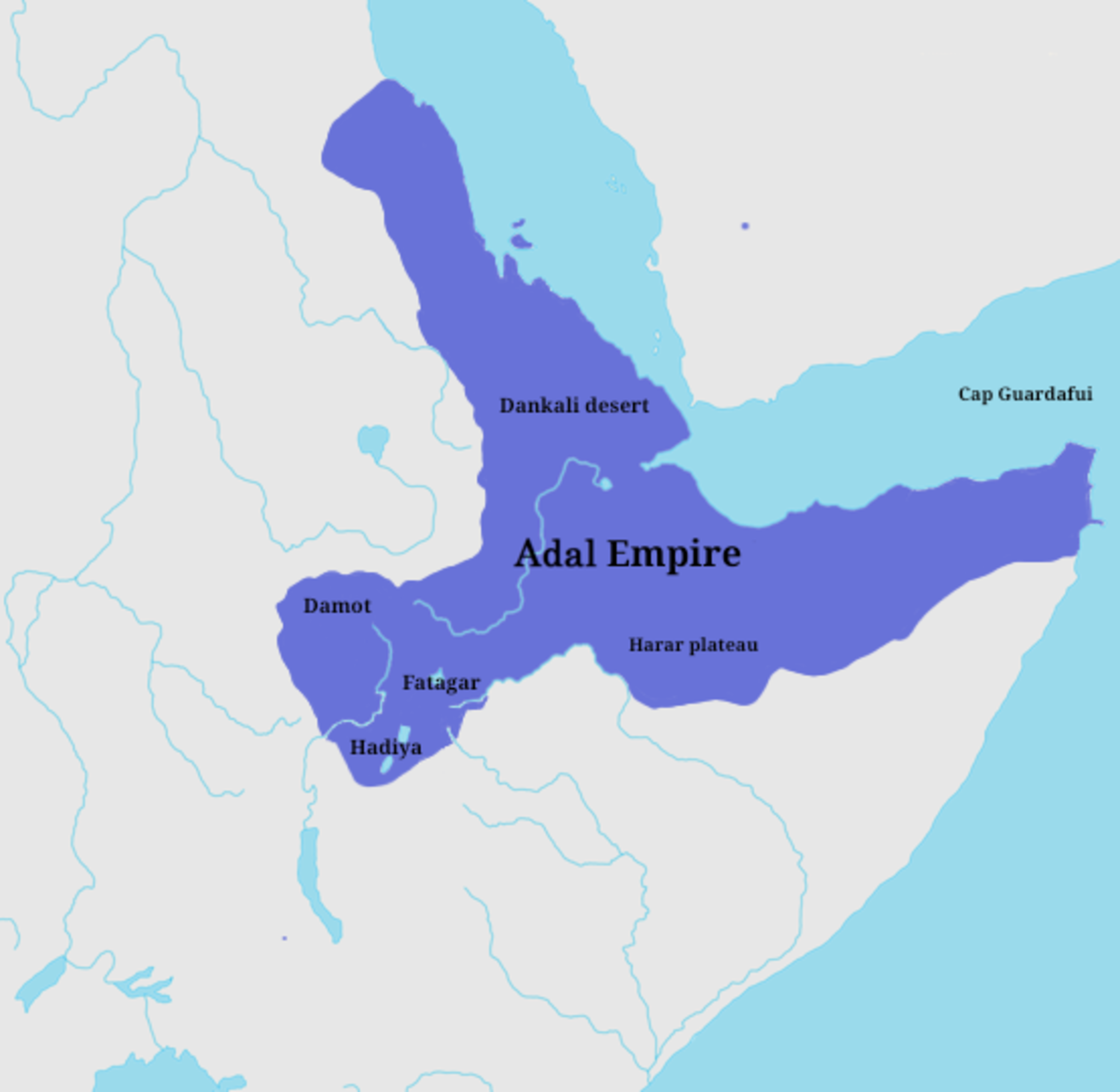Adal Empire

In the channels of African history, the Adal Empire emerges as a fascinating and powerful entity whose influence stretched across the Horn of Africa. Flourishing during the 15th to the 16th century, this empire has left an indelible mark on the region’s socio-political and religious landscape, making it a subject worthy of exploration and admiration. Situated in present-day Awdal, Adal was geographically poised to become a significant player in the region’s affairs. The empire’s steep rise was characterized by its strategic control over trade routes, which facilitated not only wealth but also cultural exchanges and the spread of Islam. The empire’s efforts in this regard left a lasting religious imprint on the region, with Islam becoming a major religious force, still extremely present today.
Due to its prominence as a trade hub, the ports buzzed with activity, connecting the Arabian peninsula, the wider Middle East, and beyond. This vibrant trade enabled the empire to acquire wealth, weaponry, and allies. The empire became a melting pot of cultures, where Arabs, Africans, and Persians interacted, leading to a rich tapestry of linguistic, architectural, and culinary legacies. This multicultural aspect continued throughout history as Awdal’s coastal cities experienced a mix of cultures due to a lasting tradition of international trade.
The legacy of the Adal empire is enduring. The story is one of triumph, transformation, and resilience. It not only dominated the Horn of Africa but also left a mark on the region’s history. The remnants of the empire define the region today through culture, language, and religion. This chapter of Somali and African history, though often overshadowed, offers valuable lessons and a testament to the region’s rich heritage and its people’s capacity for greatness. Today, this distant regal history ever looms in the air.
